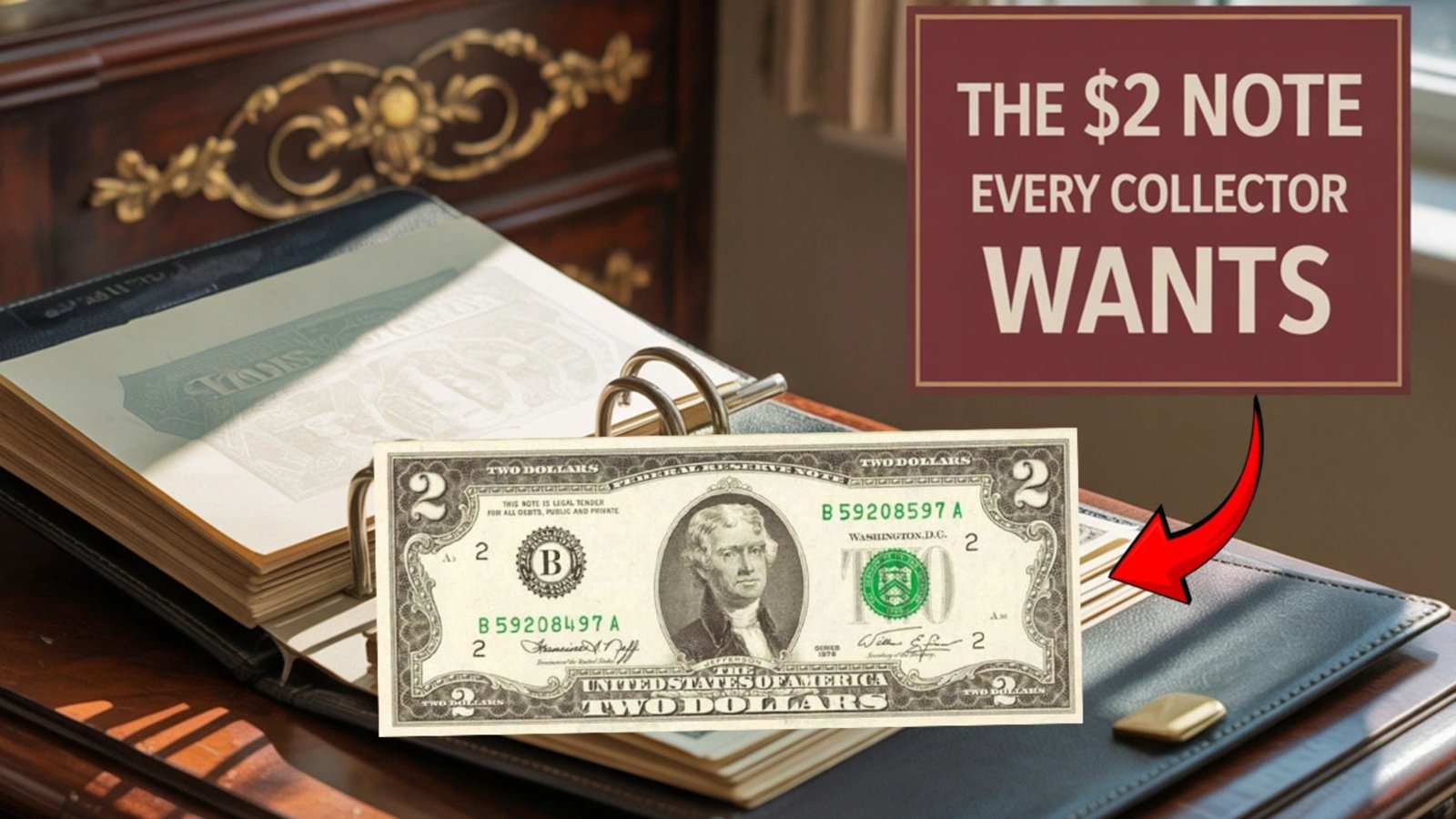This 1976 $2 Bill With Repeater Serial Number Is Worth Over $75,000 : At face value, a $2 bill seems like a novelty — uncommon, but not necessarily valuable. However, certain 1976 $2 bills are far more than just rare curiosities. If yours contains a unique serial number pattern known as a repeater, it could be worth over $75,000 to collectors. This article breaks down why that is, and what exactly you should be looking for.
What Is a Repeater Serial Number?
A repeater serial number is a sequence of digits on a bill that repeats in a recognizable pattern. For example, serials like “12121212,” “45454545,” or “12341234” are considered repeaters. These serials are especially attractive to collectors because of their symmetry and rarity. The more perfect or unusual the repetition, the higher the demand — and the value.
The Importance of the 1976 $2 Bill
The 1976 $2 bill was released to commemorate the United States Bicentennial, making it historically significant. It marked the reintroduction of the $2 denomination after years of being out of circulation. The reverse of the bill features a depiction of the signing of the Declaration of Independence, making it a favorite among history buffs and collectors alike. While millions were printed, only a tiny fraction contain valuable serial number patterns.
Condition Matters: Crisp Notes Are Worth More
For any collectible currency, condition is critical. A 1976 $2 bill with a repeater serial number will only reach its full value if it’s in excellent condition — ideally uncirculated. That means no folds, tears, stains, or signs of wear. A well-preserved note can command tens of thousands more than a circulated one, even with the same serial number.
Real Market Value: Up to $75,000 or More
Some 1976 $2 bills with repeater serial numbers have been appraised or sold for upwards of $75,000. These prices are typically achieved at high-profile auctions or through private collectors who specialize in fancy serial number bills. While not every repeater reaches that level, especially if it’s not in perfect condition, the potential value is still astonishing for a note originally worth only $2.
Why Collectors Pay So Much for Serial Numbers
Serial number collecting — often called “fancy serial collecting” — is a niche but passionate area of currency collecting. Repeater serial numbers, along with others like “ladders,” “radars,” and “solids,” are highly desirable. Collectors are willing to pay large sums to acquire the rarest and most visually pleasing examples, especially when paired with a historically significant bill like the 1976 $2 note.
Check Your Wallet — You Might Be Sitting on a Treasure
If you have any old $2 bills lying around, now is the time to take a closer look. Focus on the serial number, the bill’s condition, and the year. You might just discover that a forgotten piece of currency tucked away in a wallet or drawer is worth more than most modern collectibles. A simple glance could turn into a once-in-a-lifetime find.
Conclusion: Small Bill, Big Value
The 1976 $2 bill with a repeater serial number is a perfect example of how everyday items can hold unexpected value. It’s not just the age or the denomination — it’s the unique combination of rarity, pattern, and condition that turns a small bill into a $75,000+ treasure. So before you spend your next $2 bill, give it a second look. It might just be the most valuable thing in your wallet.





